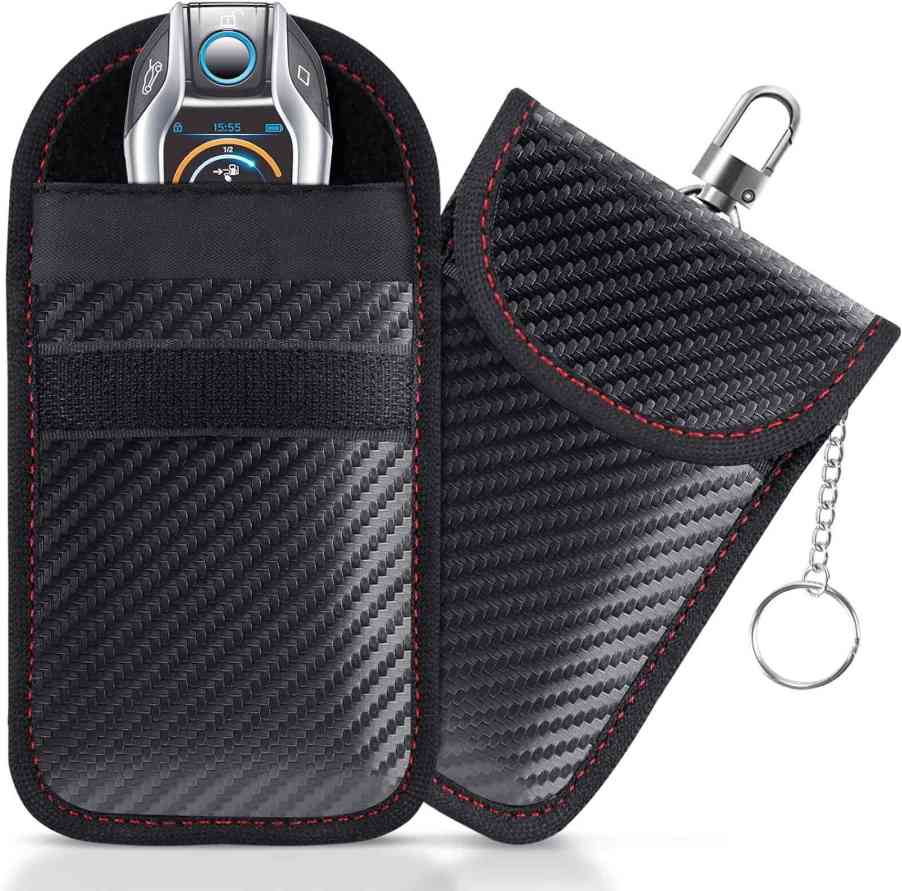
Some Owners Are Keeping Their Keys in RFID-Blocking Pouches, for Safety
Thieves are constantly inventing new ways to steal cars. But some owners are fighting back, developing new ways to protect cars. This is why many car owners have begun keeping their key fobs in RFID-blocking pouches–to try and prevent their vehicle being stolen.
A popular new auto theft method targeting keyless-entry vehicles is called a “relay attack.” One thief waits by the target car with a signal repeater. A second thief walks up to your front door and holds up a long wire antenna attached to a device that “relays” your key fob’s signal. If the key fob is near the door and unprotected, their partner may be able to open your car door and start the engine.
Tricking a keyless entry car into thinking the key fob is nearby requires relaying the radio frequency ID (RFID) signal the key fob emits. The easiest way to protect your car is to shut off keyless entry: If you need to click a button on your key fob to unlock your car, a regular relay attack won’t work.
That said, not every automaker allows you to disable this feature. Some vehicle owners are instead moving their key fobs and spares away from the front door. But every generation of RFID relays is more advanced. So now many drivers are going a step further and using RFID-blocking technology to protect their vehicles.
There are many ways to weaken or block an RFID signal. Keeping your keys in a metal container, such as a metal box, an empty can, aluminum foil, or even a foil chip bag could keep your car from getting stolen. But purpose-built RFID-blocking pouches are cheap enough, that many owners are investing in them. There are multiple companies offering them for $5-10.
If you want to protect your keyless-entry car, its not a bad idea to keep your key fob in an RFID-blocking pouch. Just remember that you will need to protect any spare key fobs in the same way.
Next, find out why some owners are completely rewiring their car’s OBD port for safety, or you can see more ways to foil a relay attack in the video below:



